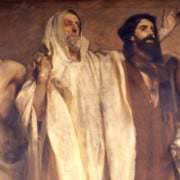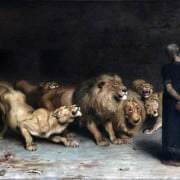The book of Haggai
Ezra tells us that 50,000 Jews returned from Babylon to Jerusalem. Their arrival was not welcomed with palm branches and cheers. Opposition to their return caused them to stammer and fall in discouragement. Ezra reports their rebuilding of the temple but there is a little space that he leaves out. It is the space of the words of Haggai.
Haggai and Zechariah arrive to a discouraged people. They are busy restoring their homes and restoring agricultural productivity (Haggai 1). It was in 520 B.C that the two prophets begin telling the people their priorities are upside down. The Temple is to be built first. By 516 B.C the Temple is built.
The book consists of four oracles that Haggai recorded. The first oracle (1:1-11) covers Haggai telling the leaders and people that the trouble they were facing was because they hadn’t tended to the most important thing – the Temple first.
His second oracle came less than a month after the rebuilding had started (2:1-9). It was clear to all that the second Temple was nowhere close to the glory of Solomon’s Temple. The people who saw Solomon’s would have been in their seventies. Haggai assures them that the second Temple will none the less far exceed Solomon’s in glory.
The third oracle (2:10-19) is in two parts. The message is that holiness is not contagious. Having a temple would not make the people holy. The only hope the people had was not the ‘magic’ of the Temple but the grace and mercy of God.
His fourth oracle (2:20-23) is for Zerubbabel the governor of Judah. The message is that Zerubbabel would not be the one to see a return of David’s rule to Judah, this would come in the future.


